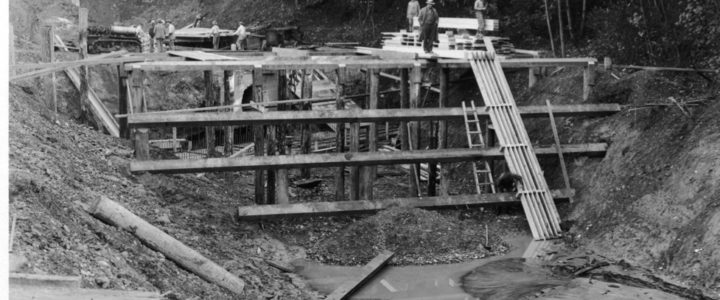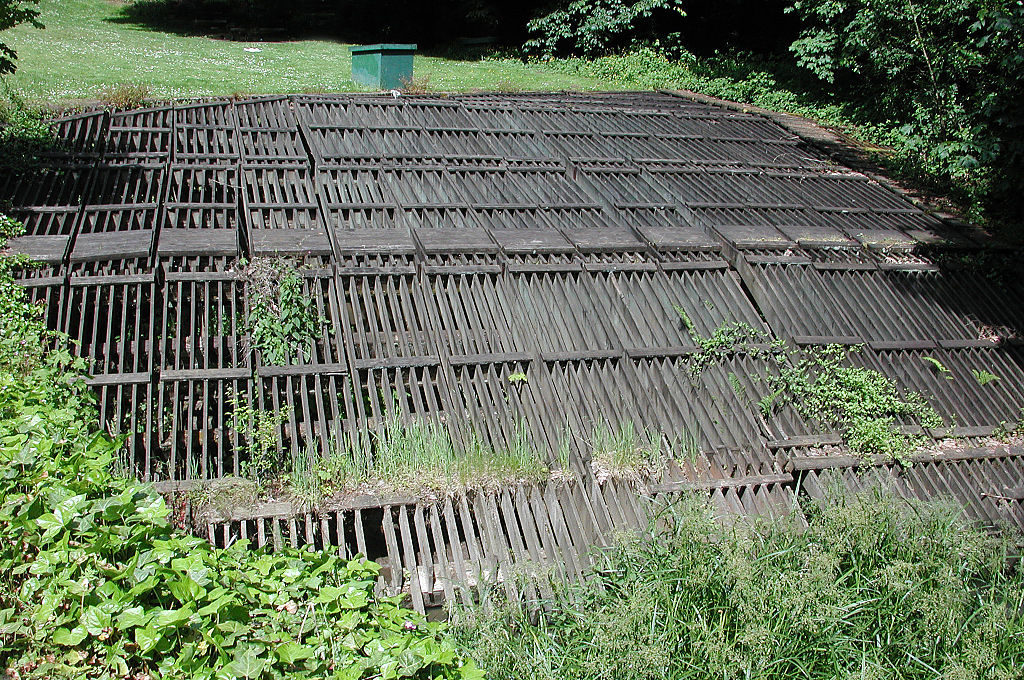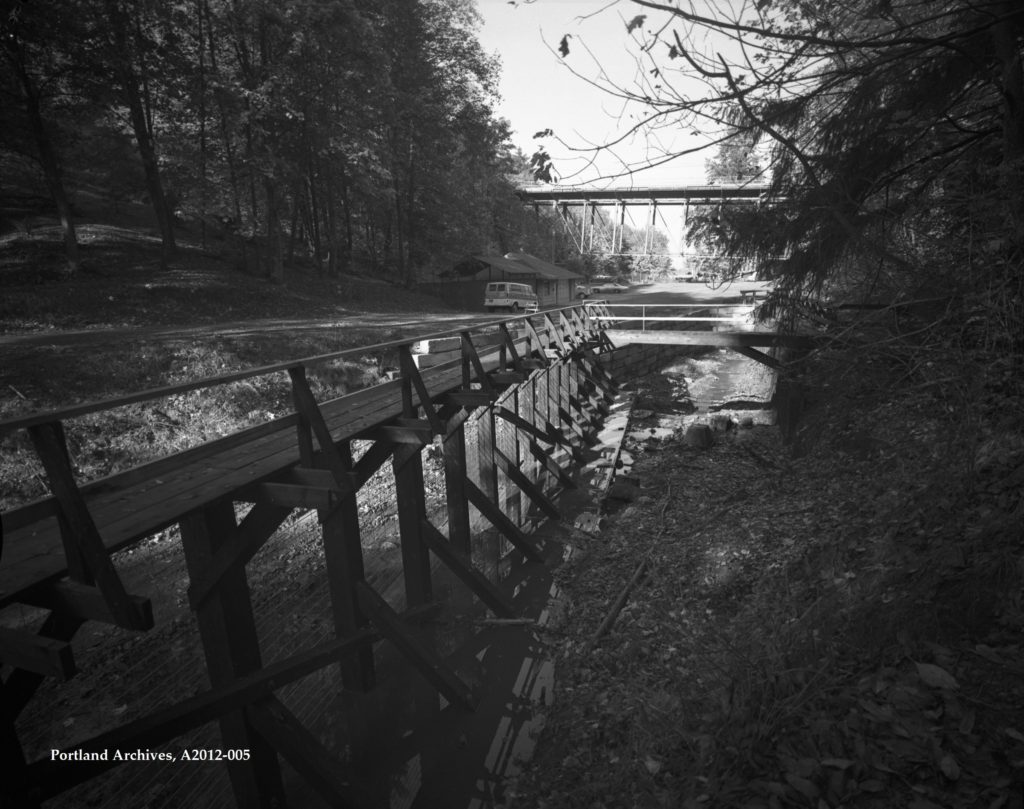What is the wooden walkway and grate right at the beginning of the Lower Macleay Trail?
Answer: Trash Filters
The urban stream known as Balch Creek goes underground in Lower Macleay Park, just before the Thurman Street Bridge. The visible man-made barriers there are the wooden a wood trash filter or “trash rack” that prevents large logs and other debris from entering the combined storm sewer pipe taking the creek to the Willamette. The “walk way” in question was designed to collect smaller objects from entering the pond created by the dam. Archival construction images show the dam beneath the wooden grate system and the walkway (the “old maintenance bridge” has now decayed and often misidentified as a vestige of Lafe Pence’s 14-mile sluice system of 1906-07).
Balch Creek Diverted into Sewer
In 1921 City of Portland diverted the creek into a pipe (culvert). The historic system was causing flooding so a dam and more vigorous 9,000 foot sewer system the Thirtieth Street Sewer (AKA Balch Creek Sewer AKA Balch Creek Covert) was proposed in 1930 and complete February of 1932 for a cost of $112,558.33. The dam is hidden under the existing trash filter, constructed under the direction of the City of Portland’s the Public Works Administration the cost was passed onto rate payers in the region. In addition to regular maintenance, major restoration efforts were conducted in 1945 and 1970. Balch Creek runs 3.5 miles from its headwaters on the crest of the West Hills to the Willamette River. A primary source of water for the City of Portland in the mid-nineteenth century, it was already contaminated by 1895. Urban use and development from villains like Lafayette Pence (1857-1923) to residential development (1888-today) have degraded the watershed. The creek, named for Danford Balch, who held the original donation land claim to the area, currently supports up to 4,000 isolated cutthroat trout. Logs and wapato plants have been deliberately placed in the stream to enhance the habitat for the fish.
This trash rack is included on our Slabtown Tour Route.










